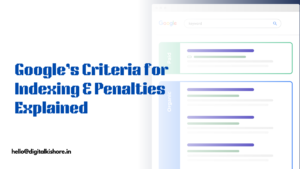With search engines evolving rapidly and users increasingly seeking instant, relevant answers, traditional SEO has given way to a more focused approach: Answer Engine Optimization (AEO). In this guide, we’ll delve into what AEO is, why it’s crucial for businesses today, and how to optimize your content to secure top visibility in search results.
What is Answer Engine Optimization (AEO)?
Answer Engine Optimization, or AEO, is the process of optimizing content to answer users’ specific questions directly, aiming to be featured at the top of search results in snippets, especially on voice search platforms. While SEO traditionally focuses on driving traffic through relevant keywords, AEO emphasizes providing clear, concise answers to questions, giving users an immediate response to their queries.
Imagine someone asking, “What’s the best way to bake a cake?” A website optimized for AEO will provide a direct, step-by-step answer, increasing the likelihood of appearing as a “featured snippet” or being read aloud by virtual assistants like Google Assistant or Siri.
Why is AEO Important?
The rise of voice search and mobile usage has made AEO increasingly vital. Voice searches tend to be question-based, with users expecting direct answers rather than just links to websites. Optimizing for AEO can help capture these searches, driving visibility, traffic, and credibility.
Here are some key reasons why AEO matters:
- Capturing Featured Snippets: Content optimized for AEO is more likely to appear in the coveted “position zero,” the featured snippet on Google that directly answers a user’s query.
- Voice Search Readiness: As voice search gains popularity, the demand for quick, clear answers rises. AEO helps your content become “voice-search friendly,” making it more likely to be chosen as an answer for voice search results.
- Increased Engagement and Authority: Providing direct answers builds trust with users, establishing your site as an authority on the subject.
- Enhanced User Experience: AEO provides a user-friendly experience by delivering precise answers, keeping users on your page longer and satisfying their immediate needs.

Key Strategies for Effective AEO
Optimizing for AEO requires more than just good content – it’s about creating content that answers specific questions accurately, concisely, and in a way that search engines can understand. Here’s how to implement AEO effectively:
1. Identify and Target Question-Based Keywords
To succeed in AEO, focus on question-based keywords. Think of queries starting with “how,” “what,” “why,” “where,” and “when.” Use tools like Answer the Public, Google’s People Also Ask, or even Google’s autocomplete suggestions to uncover popular questions related to your industry.
Example: If you’re optimizing content on cake baking, target questions like:
- “How to bake a cake at home?”
- “What ingredients are needed for a basic cake?”
2. Create Content in Q&A Format
Content in Q&A format is perfect for AEO. Structure your content to answer each question directly, with a short, straightforward answer followed by more in-depth information. This approach makes it easy for search engines to extract the main answer.
Example:
- Question: “What is Answer Engine Optimization (AEO)?”
- Answer: “Answer Engine Optimization (AEO) is the process of optimizing content to provide direct answers to user questions.”
3. Use Structured Data Markup (Schema)
Schema markup, or structured data, helps search engines understand your content better. Adding structured data to your content enhances the chances of appearing as a rich snippet in search results, making your answers more accessible and relevant.
Common Types of Schema Markup for AEO:
- FAQ schema: Useful for pages with frequently asked questions.
- How-to schema: Ideal for step-by-step guides or tutorials.
- Q&A schema: Best for Q&A pages or forums.
4. Craft Concise, Clear Answers
AEO requires short, to-the-point answers, typically 40–50 words long, to fit within a featured snippet. Get to the main point first, then elaborate. Focus on giving the best, most complete answer right at the top of your response.
Example:
- Question: “What is AEO?”
- Answer: “Answer Engine Optimization (AEO) focuses on creating content that answers specific user questions, aiming for featured snippets and voice search visibility.”
5. Prioritize User Intent and Content Relevance
Google and other search engines prioritize content that meets user intent – whether that’s informational, navigational, or transactional. Understand what users want to achieve with their questions and tailor your content to meet that goal directly.
Example: If users search “best cake recipe,” they’re likely looking for a recipe guide, not just an article on cakes. Match your content type to their needs.
6. Optimize for Voice Search
Voice searches tend to be more conversational. Write in a natural tone and answer in a conversational style to align with these queries. Try to answer questions in a way that feels like a response you’d give in a real conversation.
Tip: Use simple language, avoid jargon, and make sure your answer sounds natural if spoken aloud.
Tracking and Measuring Your AEO Success
After implementing AEO strategies, it’s essential to monitor and measure your success. Here are some ways to track AEO performance:
- Featured Snippet Rankings: Use SEO tools like Ahrefs, SEMrush, or Moz to track your featured snippet positions.
- Voice Search Testing: Use devices with voice search capabilities (Google Home, Siri, Alexa) to see if your content is selected as a response.
- User Engagement Metrics: Higher time on page, reduced bounce rates, and increased click-through rates on SERPs can indicate effective AEO.
Final Thoughts
As digital content consumption shifts towards mobile and voice searches, Answer Engine Optimization becomes increasingly relevant. Adapting to AEO not only aligns your content with the future of search but also enhances the overall user experience by providing clear, direct answers that meet users’ needs quickly.
Start by identifying the key questions in your industry, structure your content to provide concise answers, and leverage schema markup to give search engines the clues they need. With AEO, you’re not just optimizing for clicks – you’re positioning your site as a trusted source of information that keeps users coming back for answers.















